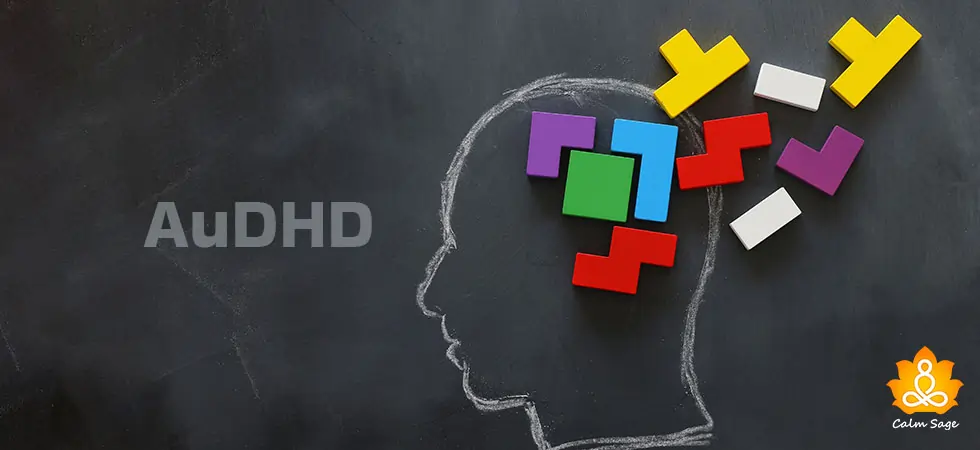What is ADHD Paralysis: Symptoms, Types & How to Overcome

Attention deficit hyperactivity disorder (ADHD) is a neurodevelopmental condition that can be characterized by inattentiveness, impulsivity, and hyperactivity. ADHD tends to keep you disturbed and hyper almost all the time.
Living with ADHD is difficult because the challenges that come with it can mess up your whole life. There are so many challenges like ADHD time blindness, ADHD paralysis hoarding issues that come with ADHD, etc.
Today, We are specifically going to talk about one of these challenges faced by people living with ADHD, ADHD paralysis. With ADHD it’s difficult to navigate your energy and if ADHD paralysis is accompanying you, you’re most likely to be frustrated.
This frustration can make you feel even worse. ADHD can completely take over your thoughts and make you feel helpless. You will have to make repeated efforts to snap out of all the negativity and focus on managing your condition so that you can lead a happy life.
Let’s talk about one way you can manage your condition, by overcoming your ADHD paralysis. Before I share with you some tips to overcome ADHD paralysis, let’s understand the condition a little better…
Quick Overview of ADHD
ADHD is a neurodevelopmental condition that affects the way your brain reacts to stimuli. ADHD can be characterized by uncontrolled and intense impulsivity, inability to maintain attention, and hyperactivity.
An individual with ADHD often struggled to stay focused on one thing. They keep jumping from one thing to another and then the third, sometimes leaving all three unfinished. You will also see a lot of impulsive actions because their thoughts are so fast that they feel this strong urge to just do whatever their thoughts are telling them to.
For example, an ADHD individual is chopping vegetables for the dinner he/she is preparing. They open the fridge to get some tomatoes and end up cleaning the fridge because it’s dirty. While cleaning they noticed that they don’t have enough eggs so they decide to go to the market to get some eggs. While returning they cross a friend’s house and stop to say Hi… and this continues.
This is what attention deficit hyperactivity looks like. There are various other things that an ADHD individual has to deal with and ADHD paralysis is one of them. Let’s understand the meaning of ADHD paralysis…
What Is ADHD Paralysis?
ADHD paralysis is defined as an individual’s inability to focus, concentrate, or perform tasks when they are dealing with ADHD. ADHD paralysis has various names, it can also be called analysis paralysis in ADHD, couch lock, or task freeze.
When an individual is dealing with ADHD paralysis they are overwhelmed with the overflow of information and thoughts in their mind or they have plenty of tasks to complete. With ADHD paralysis, doing some tasks is not the problem, the problem is beginning to perform a task.
People with ADHD paralysis cannot find the strength and will to start doing something because they are overwhelmed and apprehensive about getting up and getting on with the task. Their apprehensive thoughts make it difficult for them to take the first step.
It’s common to feel apprehensive before you start doing something new. We all have felt it, it’s like you just need a tiny push, and once you start doing it, it’s not going to be as difficult. Imagine going through this feeling every day about every routine task, we’ll that’s how ADHD paralysis feels.
ADHD Paralysis Symptoms In Adults
Spotting ADHD paralysis can be confusing sometimes because it can camouflage with other symptoms of ADHD and leave you confused. It’s important to know the symptoms of ADHD paralysis because it helps you identify the cause of your apprehensions about all the things that wait for you to be completed.
ADHD paralysis can have a direct and huge impact on your daily life. Imagine having to think so many times before doing mundane activities like getting out of bed and freshening up for the day. The fact that you can’t bring yourself up to do things even when you know how important they are, is a clear call for help.
Let’s look at the symptoms of ADHD paralysis in adults so that you know if it’s ADHD paralysis or just procrastination;
- Brain Fog
- You experience an executive dysfunction
- Social isolation
- Irritability for no apparent reason
- Exhaustion
- Time blindness
- Poor time management
- Easily distracted
- Rapid changes in mood, feelings, and emotions
- Inability to make decisions
If you have been experiencing a couple of these symptoms of ADHD paralysis, there is no need to panic. You can always go to a mental health professional for help. You should always share all the symptoms with your therapist so that you get what you need for proper treatment.
Did you know ADHD paralysis can be divided into different types? Let’s explore the different types of ADHD paralysis…
What Are The Different Types Of ADHD Paralysis?
ADHD paralysis can be divided into three different types. Since ADHD paralysis has a lot to do with executive dysfunction, the different categories of ADHD paralysis also belong to your executive functions only.
What type of ADHD paralysis you may develop completely depends on what you consider as stressful. However, an individual with ADHD can develop one or more than one types of ADHD paralysis that can sometimes last for a long time.
Let’s have a look at the 3 different types of ADHD Paralysis;
- Mental Paralysis: it is when your brain decides to freeze or shut down. Your brain stops responding to any stimulation.
- Choice Paralysis: it is when you overthink so much that you don’t get to any decision only. Choice paralysis is when you can’t seem to choose as you’re busy overthinking the options you have.
- Task Paralysis: it is when you are unable to either begin doing a task or complete the task you’ve been doing.
When you develop ADHD paralysis you can have either of these three types. There have been cases where people have had more than just one type of ADHD paralysis. If ADHD paralysis is not treated properly, it is lost for a lifetime.
Tips For Overcoming ADHD Paralysis
ADHD is known to be a life-long condition, you cannot outgrow this condition. But what you can do is manage your symptoms. By managing your symptoms, you have an opportunity to lead a healthy and comfortable life.
Here are some tips you can overcome ADHD Paralysis;
1. Write Everything Down: with ADHD one of the most crucial things is to stay organized. Therefore, one way to overcome ADHD paralysis is to note down all your appointments, events, tasks, etc.
2. Break Down Tasks: begging with a task or completing a task is difficult when you have ADHD paralysis. Breaking down your task and setting smaller goals can help you complete the tasks without diverting your attention that often.
3. Designate Project Time: when you have ADHD paralysis, time management is a big-time issue. Therefore, you need to sit down and decide how much time you’re going to give to a certain task. For example, 20 minutes for your morning routine or 30 minutes of recreational time, etc.
4. Don’t Make Perfection the Goal: do not run behind in making things perfect. The main goal should be giving your best in the time you’ve allotted for that task. Therefore, perfectionism should not be your goal, it should be the completion of the task.
5. Schedule Rewards: reinforcement is very important; it keeps you motivated. You can reward yourself after successfully getting through the week without much procrastination. Or reward yourself for completing tasks without losing focus. This will help you fight ADHD paralysis and overcome it without many difficulties.
6. Take Movement Breaks: With ADHD paralysis you already enter the task with a lot of apprehensions and overwhelming feelings. During the task, it’s very common for people with ADHD to feel even more overwhelmed. To tackle these overwhelming feelings, take breaks in the middle. Go for a tiny walk or do some breathing exercises.
How an ADHD Therapist Could Help?
With ADHD therapeutic support is a must. Since it is a life-long condition, you can easily feel overwhelmed and burnt out with all the challenges that you face on a daily basis. Experiencing brain fog, frustration, or irritation, having the stress of pending tasks, not knowing when and where to start, etc can take a toll on your already damaged mental health.
Getting therapeutic support can help you manage your symptoms in a way they don’t stop you from leading a healthy and relaxed life. Your therapist understands your condition deeply and that’s why both of you can sit together and come up with effective practical solutions for your problems.
Let’s have a look at a few more things your therapist can help you deal with your ADHD paralysis;
- Help you create and customize time management strategies
- Help you build an ADHD-friendly routine
- Help you get a better understanding of your condition
- Help you clear the brain fog and look at things with a new perspective
- Help you with creating effective boundaries for yourself and others
- Work on your decision-making and organizational skills
- Act as a constant support in stressful times
That’s All Folks!
I hope you found this blog about ADHD paralysis and ways to overcome this condition helpful, informative, and interesting. Do share this blog with your friends and family so that we can all help and support each other with conditions like ADHD paralysis.
The best way to deal with ADHD and related conditions is to understand its symptoms and how you can manage them. ADHD is a condition that stays lifelong, there is no permanent cure but proper management can do wonders.
Therefore, always focus on managing your symptoms and do not ignore self-care and self-love!
Thanks for reading.
Take care and stay safe.
Next Read:
Can Caffeine Help Calm ADHD Symptoms? Here’s What Research Says
Learn To Focus Better With The Best Focus Music Playlists For ADHD Brains
Is There A Link Between ADHD And Lying? Here’s What You Need To Know




















